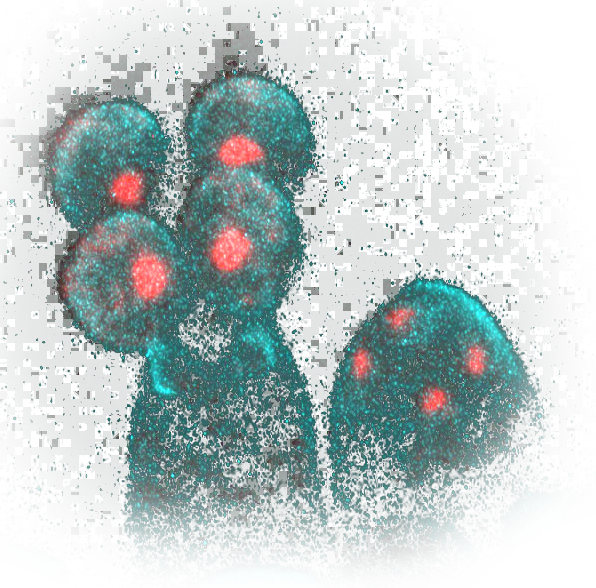Publications
Jacob, G., Wang, Y.-W., Adams, C., Cross, H., Elmore, H., Gardes, M., Gonçalves, S.C., Hess, J., Richard, F., Wolfe, B. and Pringle, A. 2024. Death caps (Amanita phalloides) frequently establish from sexual spores, but individuals can grow large and live for more than a decade in invaded forests. New Phytologist, 242:1753-1770.
Gu, T.J., Liu, P.-K., Wang, Y.-W., Flowers, M.T., Xu S., Liu, Y., Davis D.B. and Li, L. 2024. . Diazobutanone-assisted isobaric labeling of phospholipids and sulfated glycolipids enables multiplexed quantitative lipidomics using LC-MS/MS. Nature Chemistry, 16: 762-770.
Wang, Z., Wang, Y.-W., Kasuga, T., Hassler, H., Lopez-Giraldez, F., Zhang, Y., Zhang, Z., Wang, Y., Dong, C., Sil, A., Trail, F., Yarden, O. and Townsend, J. 2023. Lineage-specific genes are clustered with HET-domain genes and respond to environmental and genetic manipulations regulating reproduction in Neurospora. Plos Genetics, 19(11):e1011019.
Wang, Y.-W., McKeon, M.C., Elmore, H., Hess, J., Golan, J., Gage, H., Mao, W., Harrow, L., Gonçalves, S.C., Hull, C.M. and Pringle, A. 2023. Invasive Californian death caps develop mushrooms unisexually and bisexually. Nature Communications, 14: 6560. (featured on Science and National Geographic)
Dunkirk, N., Wang, Y.-W., Drott, M.T. Elmore, H., Robledo, G., Tulloss, R.E., Pringle, A. 2023. Amanita thiersii and Amanita foetens are closely related but genetically and geographically distinct species, leaving the origins of A. thiersii and its range expansion enigmatic [version 1; peer review: 1 approved with reservations]. F1000Research, 12: 862.
Wang, Z., Wang, Y.-W., Kasuga, T., Hassler, H., Lopez-Giraldez, F., Dong, C., Yarden, O. and Townsend, J. 2023. Origins of lineage-specific elements via gene duplication, relocation, and regional rearrangement in Neurospora crassa. Molecular Ecology.
Drott, M., Park, S.C., Wang, Y.-W., Harrow, L., Keller, N.P. and Pringle, A. 2023. Pangenomics of the death cap mushroom Amanita phalloides., and of Agaricales, reveals dynamic evolution of toxin genes in an invasive range. The ISME Journal, 17: 1236-1246. (featured on National Geographic)
Wang, Z., Kim W., Wang, Y.-W., Yakubovich, E., Dong, C., Trail, F., Townsend, J.P. and Yarden, O. 2023. The Sordariomycetes: an expanding resource with big data for mining in evolutionary genomics and transcriptomics. Frontiers in Fungal Biology, 4: 1214537.
Wang, Y.-W., Elmore, H. and Pringle, A. 2023. Uniparental inheritance and recombination as strategies to avoid competition and combat Muller's ratchet among mitochondria in natural populations of the fungus Amanita phalloides. Journal of Fungi, 9(4): 476.
Wang, Y.-W. and Ané, C. 2022. KIMGENS: A novel method to estimate kinship in organisms with mixed haploid diploid genetic systems robust to population structure. Bioinformatics, 38(11): 3044-3050.
Iapichino, M., Wang, Y.-W., Gentry S., Pringle, A. and Seminara, A. 2021. A precise relationship among Buller's drop, ballistospore and gill morphologies enables maximum packing of spores within gilled mushrooms. Mycologia, 113(2): 300-311.
Wang, Y.-W., Slot, J., Hess, J. and Pringle, A. 2020. De novo gene birth, horizontal gene transfer and gene duplication as sources of new gene families associated with the origin of a symbiosis in the fungal genus Amanita. Genome Biology and Evolution, 12(11): 2168-2182.
Chung P.-C., Wu H.-Y., Wang, Y.-W., Ariyawansa, H.A., Hu, H.-P., Hung, T.-H., Tzean, S.-S. and Chung, C.-L. 2020. Diversity and pathogenicity of Colletotrichum species causing strawberry anthracnose in Taiwan and description of a new species, Colletotrichum miaoliense sp. nov. Scientific Reports, 10(1): 1-16.
Hoeksema, J.D., Bever, J.D., Chakraborty, S., Chaudhary, V.B., Gardes, M., Gehring, C.A., Hart, M.M., Housworth, E.A., Kaonongbua, W., Klironomos, J.N., Lajeunesse, M.J., Meadow, J., Milligan, B.G., Piculell, B.J., Pringle, A., Rúa, M.A., Umbanhowar, J., Viechtbauer, W., Wang, Y.-W., Wilson G.W.T. and Zee, P.C. 2018. Evolutionary history of plant hosts and fungal symbionts predicts the strength of mycorrhizal mutualism. Communications Biology, 1(1): 116.
Wang, Y.-W. and Tzean, S.-S. 2015. Dung-associated, potential hallucinogenic mushrooms from Taiwan. Taiwania 60(4): 160-168. (featured on cover page)
Wang, Y.-W., Hong, T.-W., Tai, Y.-L., Wang Y.-J., Tsai, S.-H., Lien, P. T. K., Chou, T.-H., Lai, J.-Y., Chu, R., Chen, B.-J., Ding, S.-T., Irie, K., Li, T.-K., Tzean, S.-S. and Shen, T.-L. 2015. Evaluation of an epitypified Ophiocordyceps formosana (Cordyceps s. l.) for its pharmacological potential. Evidence-Based Complementary and Alternative Medicine, 2015: 189891.
Tzean, S.-S., Hsieh, W.-H., Chang, T.-T., Wu, S.-H., Ho, H.-M., Chen..., and Wang, Y.-W. 2015. Mycobiota Taiwanica 3rd edition. National Taiwan University, Taiwan.
